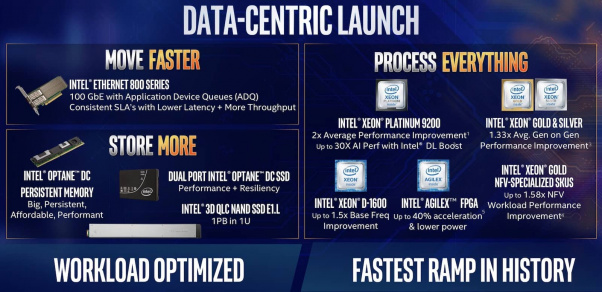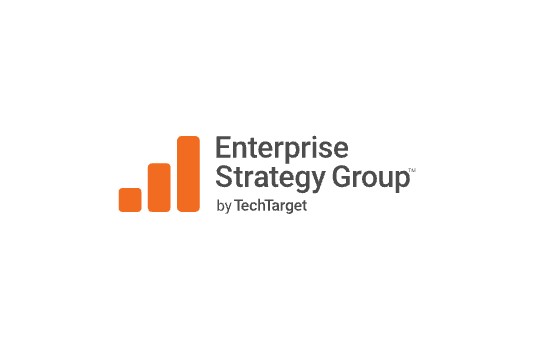Last week Intel hosted a group of press and analysts to learn about its Data Centric Innovation launch. Driven by the proliferation of cloud computing, growth in AI and analytics, and the cloudification of the network and the edge, Intel released a number of new technologies to help organizations process, store, and move all the data that is being created.
This was an impressive portfolio launch with next generation technologies enabling organizations to process, store, and move data more effectively. However, while most think of Intel as a technology company, and by that, I mean a hardware technology company, Intel made it quite clear that it is deeply invested in software development and has over 10,000 software developers working on delivering additional value.
All that said, let’s start with the piece that Intel is best known for: Its processors. Intel announced:
- The 2nd Generation Intel Xeon Scalable processor This new processor took center stage and Intel described its potential use cases as covering everything from the cloud to the edge as well as delivering a number of advantages for AI/ML environments, network functions, security, and storage.
- New capabilities for this processor include Intel Deep Learning (DL) Boost to help accelerate AI deep learning inference, support for Intel Optane DC Persistent Memory (more on this in the store section), and several hardware enhanced security features such as side channel protection.
Additionally, Intel releases a number of processor families optimized for workloads and business operations. They include:.
- Intel Xeon Platinum 9200. Equipped with its 56 core and 12 memory channel capability this processor family is targeted at high-performance computing (HPC) workloads, AI applications and high-density infrastructure.
- Fifty workload optimized Xeon Processors (Gold and Silver) plus dozens of custom processors with deep engineering relationships with customers. This includes a new network optimized Xeon Scalable processor that was designed in cooperation with major CSPs to deliver more capacity for subscribers and reduce NFV bottlenecks.
- Intel Xeon D-1600, providing System on Chip (SoC) capabilities for 5G and Edge applications where power and space are limited.
- Intel Agilex FPGAs, built on a new 10nm FPGA to provide organizations with application specific optimization and flexible hardware acceleration.
On the storing side, the big news was centered around persistent memory. However, there were a number of storage related announcements including:
- Intel Optane DC Persistent Memory. Organizations can leverage this high-capacity persistent memory in combination with the new 2nd Gen Intel Xeon Scalable processors to accelerate access to memory and perform memory intensive tasks much more quickly.
- Intel Optane SSD DC D4800X (dual port) for mission-critical HA environments.
- Intel SSD D5-P4326 (Intel QLC 3D NAND), which brings large affordable capacities to read-intensive cloud workloads.
For the moving aspect, Intel announced a new Ethernet Adapter:
- Intel Ethernet 800 series. These new 100Gbps adapters have new technology Intel refers to as Application Device Queues (ADQ) technology. Intel claims this ADQ capability will increase application response time predictability while reducing application latency and improving throughput.

It’s great to see this level of innovation and new technology coming out of Intel because we know it is going to start making its way into solutions from its OEM and cloud partners. It is pretty common knowledge that many AI/ML technologies are only limited by the compute or processing power, so I am looking forward to seeing how these new processors with DL Boost and Persistent Memory can improve existing solutions and open the door to new solutions.
Given the fact that the pendulum is swinging back toward distributed environments to facilitate compute intensive activities in support of IoT initiatives at the edge, it is good to see Intel focus there with SoC and work with communication service providers to deliver enhanced technology to help roll out 5G and scale NFV environments.
Intel continues to innovate with this release on both its hardware and software (10K developers) to provide either workload optimized or custom processors to its partners. I am looking forward to seeing the slew of announcements from Intel’s OEM and cloud partners illustrating how they are leveraging this new technology to deliver real benefits to their customers.






